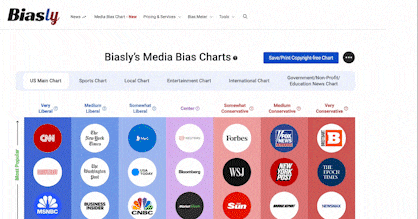 Yahoo News Article Rating
Yahoo News Article RatingTennessee House of Representatives District 15 Democratic primary: Meet the candidates
- Bias Rating
- Reliability
35% ReliableAverage
- Policy Leaning
-68% Medium Left
- Politician Portrayal
-30% Negative
Continue For Free
Create your free account to see the in-depth bias analytics and more.
By creating an account, you agree to our Terms and Privacy Policy, and subscribe to email updates.
Bias Score Analysis
The A.I. bias rating includes policy and politician portrayal leanings based on the author’s tone found in the article using machine learning. Bias scores are on a scale of -100% to 100% with higher negative scores being more liberal and higher positive scores being more conservative, and 0% being neutral.
Sentiments
31% Positive
- Liberal
- Conservative
| Sentence | Sentiment | Bias |
|---|---|---|
Unlock this feature by upgrading to the Pro plan. | ||
Reliability Score Analysis
Policy Leaning Analysis
Politician Portrayal Analysis
Bias Meter
Extremely
Liberal
Very
Liberal
Moderately
Liberal
Somewhat Liberal
Center
Somewhat Conservative
Moderately
Conservative
Very
Conservative
Extremely
Conservative
-100%
Liberal
100%
Conservative

Contributing sentiments towards policy:
63% : When local decisions significantly impact neighboring areas, state intervention can balance regional implications.60% : Civil rights and equal protection necessitate state intervention to uphold constitutional rights and prevent inequalities.
60% : Unfortunately, the controlling party has mostly ignored these priorities in favor of division, culture wars and corporate tax breaks that appeal to extremists and their wealthy donors.
58% : Republicans can't be the party of "small government" when they don't let small governments do their job.
57% : I will work to return local control to local systems, build state-level enthusiasm for public schools, and make District 14 a place where the most highly qualified educators want to live and serve.
56% : I would work to increase public education funding to raise teacher pay, employ more professional staff (psychologists, guidance, social workers), bring up current buildings to modern standards, and expand the number of schools to reduce stress on existing infrastructure.
55% : First, state involvement in local-only issues should be an extreme last resort, after all nonlegislative support and dedicated consultation with direct stakeholders has occurred.
54% : When the State legislature restricts local governments, their motivation is partisan politics, not the citizen's best interests or the interests and values of small government.
54% : We must also work to make those same necessities more affordable by continuing to push to expand Medicaid so that hardworking Tennesseans have access to affordable healthcare and prioritizing affordable housing options in all neighborhoods.
52% : She said the state must "adequately fund public schools," but lawmakers should step away from their partisan roles to determine how to best prepare kids for the future, especially when it comes to technological advancements and artificial intelligence.
51% : Given that the majority of households in the districts are families with children, the biggest issue facing constituents is public education.
50% : Additionally, state oversight is warranted when local laws conflict with state or federal constitutions.
50% : (from candidate questionnaire) Our current supermajority within the State House claims to be the party of small government.
44% : (from in-person interview) Hammond said she would never vote for voucher legislation, and that more money needs to be allocated toward public schools.
44% : As a legislator, I would vote against vouchers - or any attempt to transfer public taxpayer money away from public schools.
42% : Finally, the issue should be widespread throughout the state, with actual complications that state involvement can help mitigate.
39% : (from candidate questionnaire) Widespread concerns about state interference in schools.
*Our bias meter rating uses data science including sentiment analysis, machine learning and our proprietary algorithm for determining biases in news articles. Bias scores are on a scale of -100% to 100% with higher negative scores being more liberal and higher positive scores being more conservative, and 0% being neutral. The rating is an independent analysis and is not affiliated nor sponsored by the news source or any other organization.






















